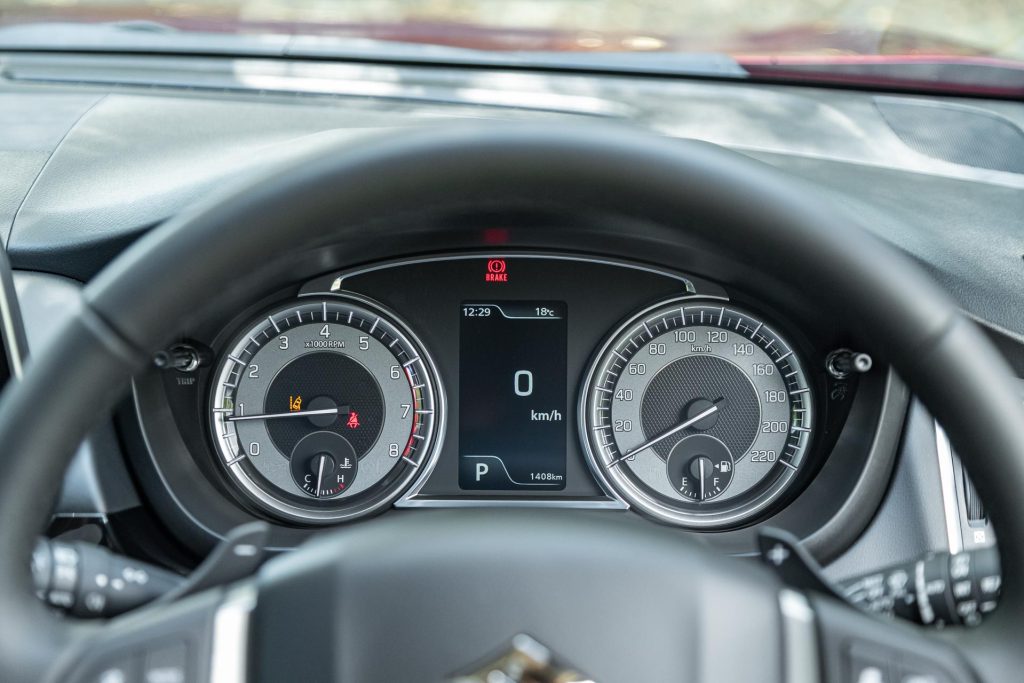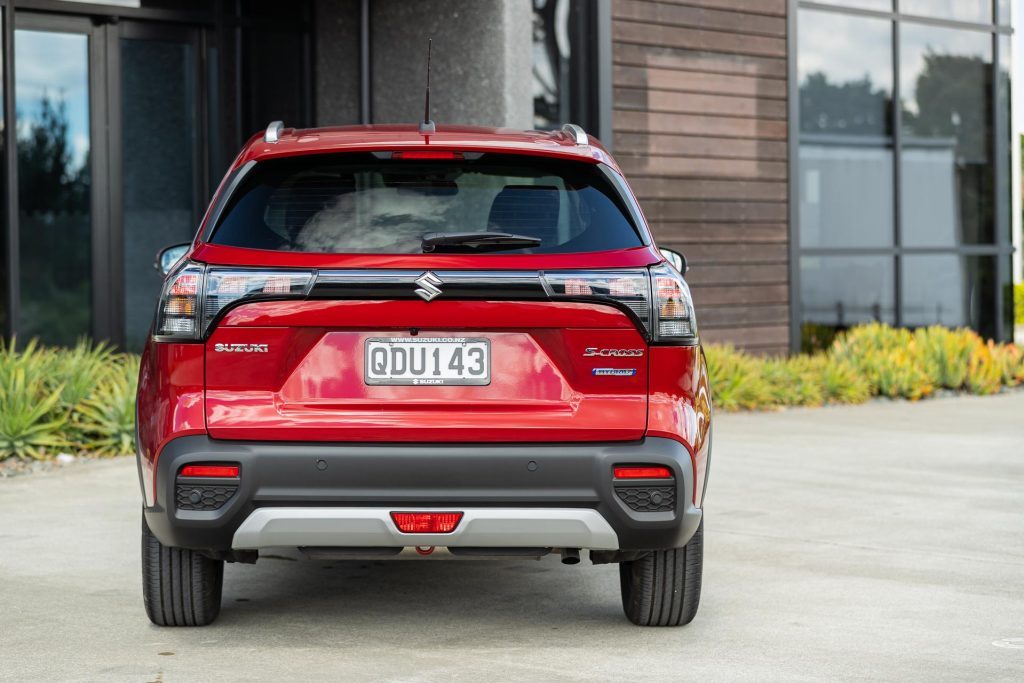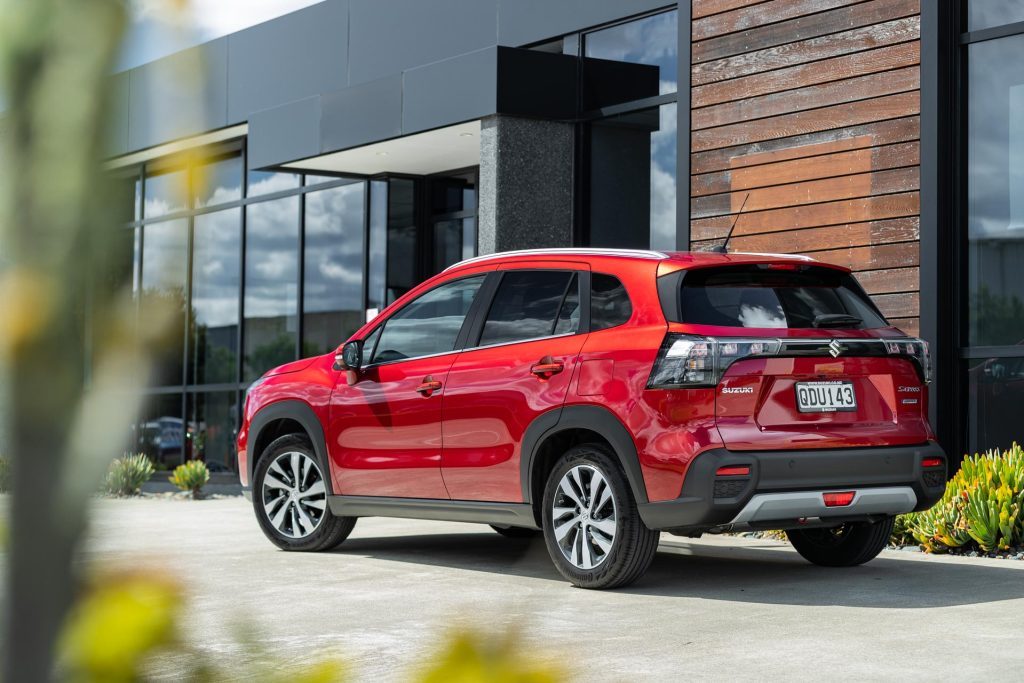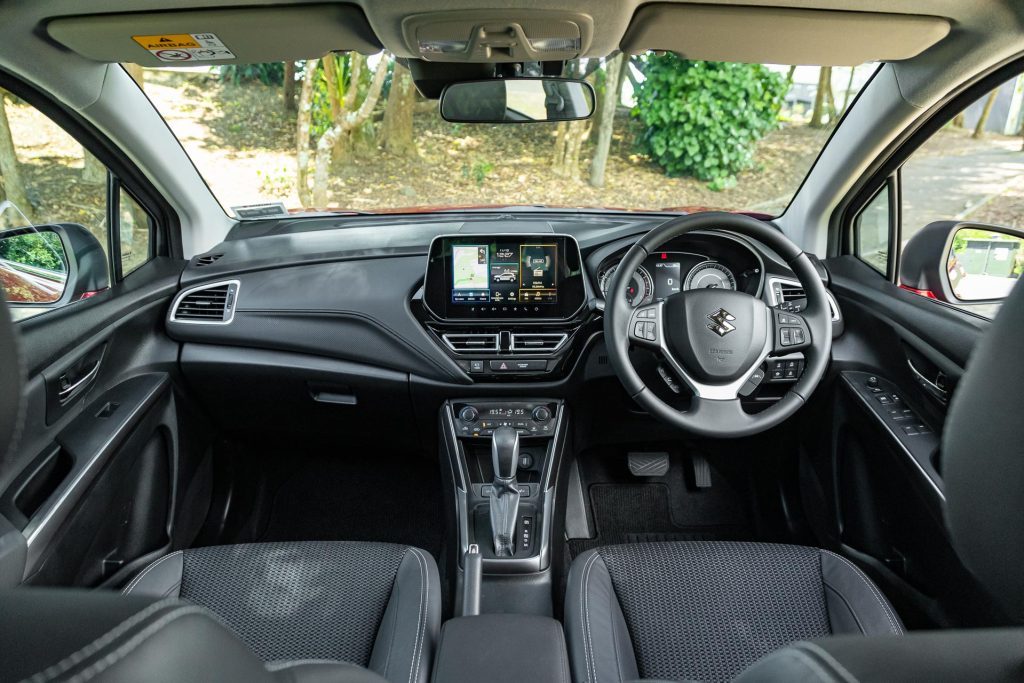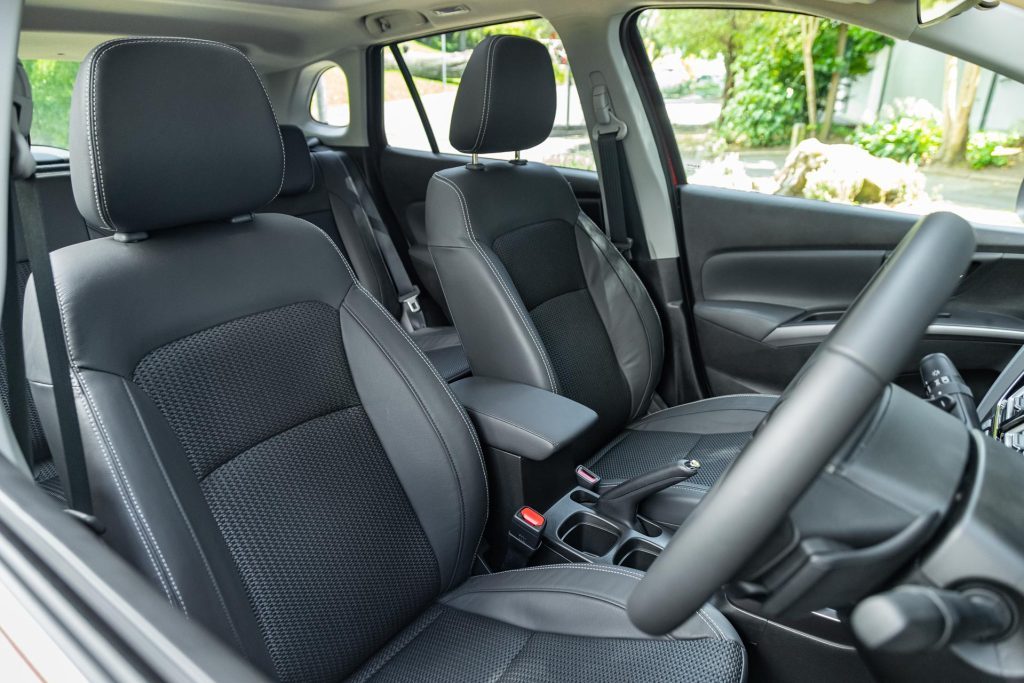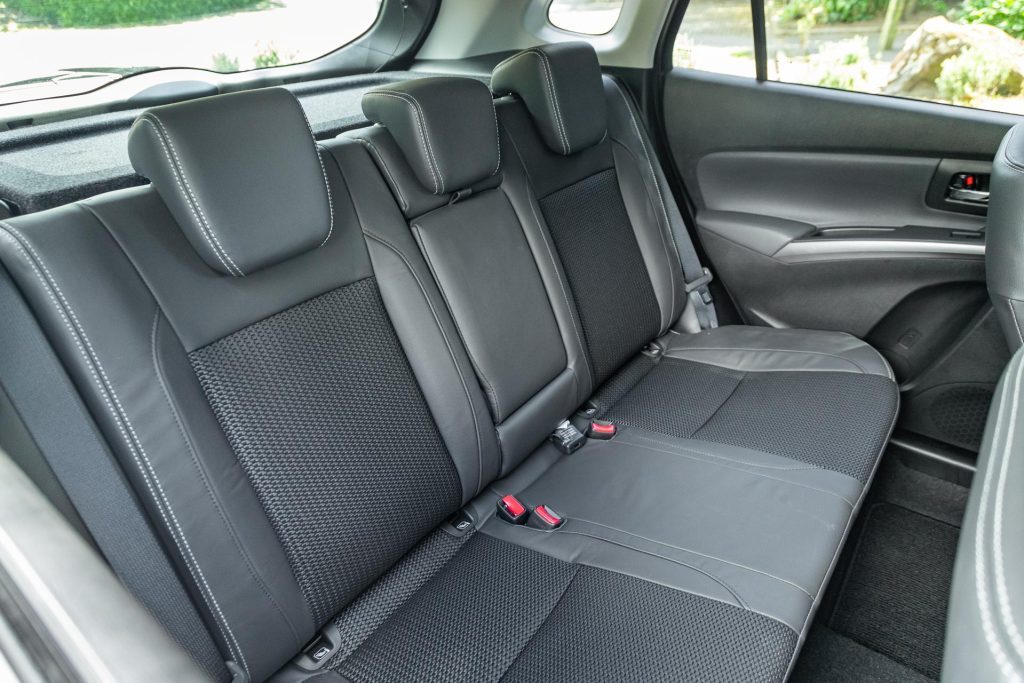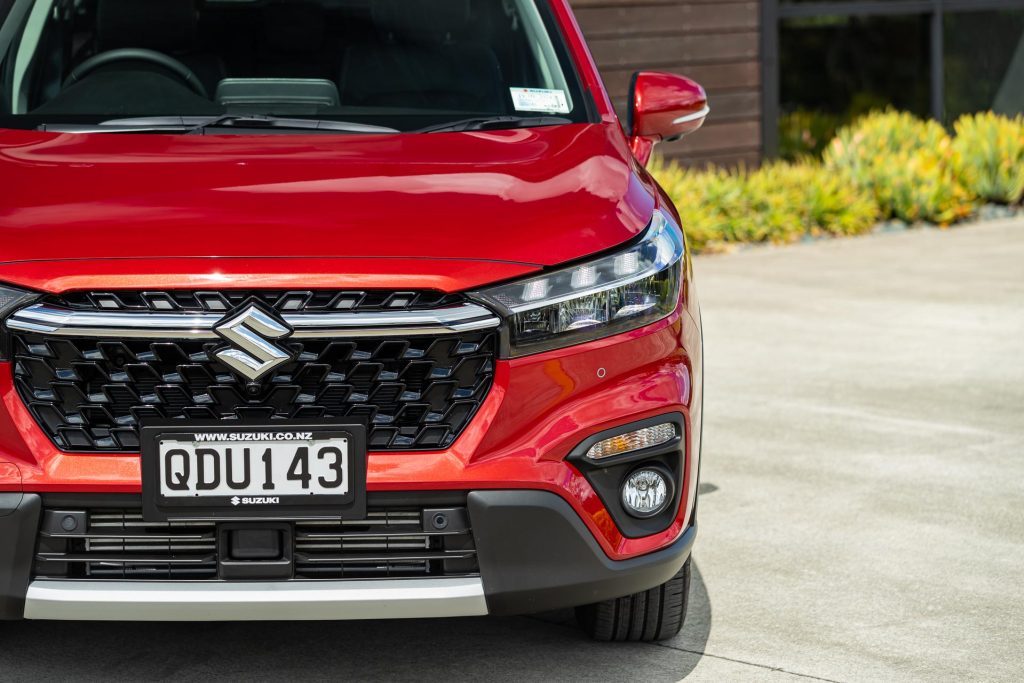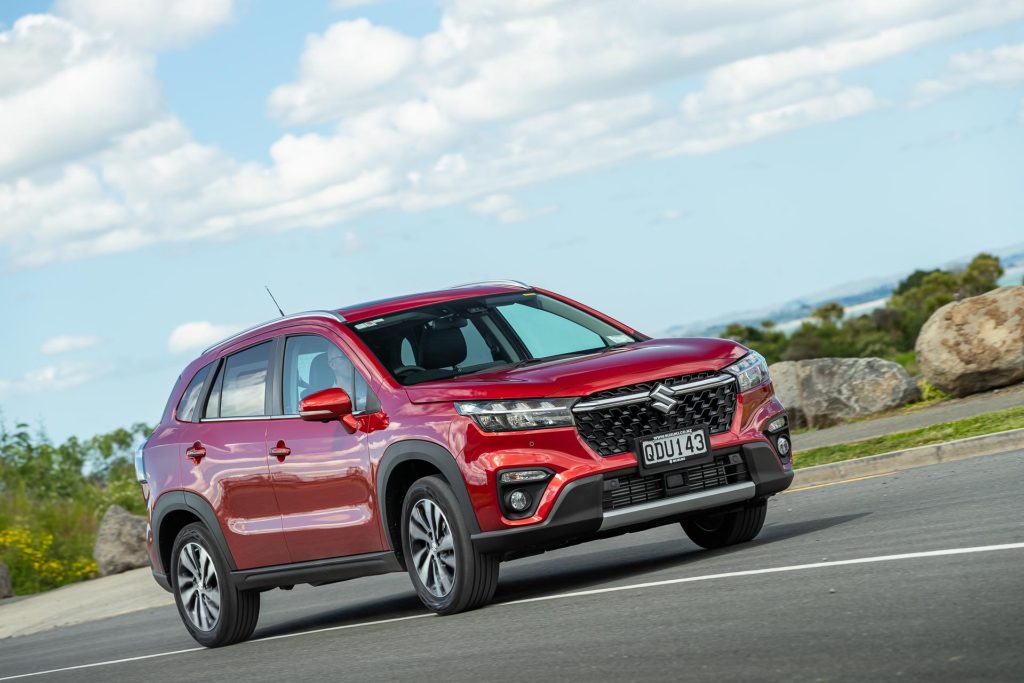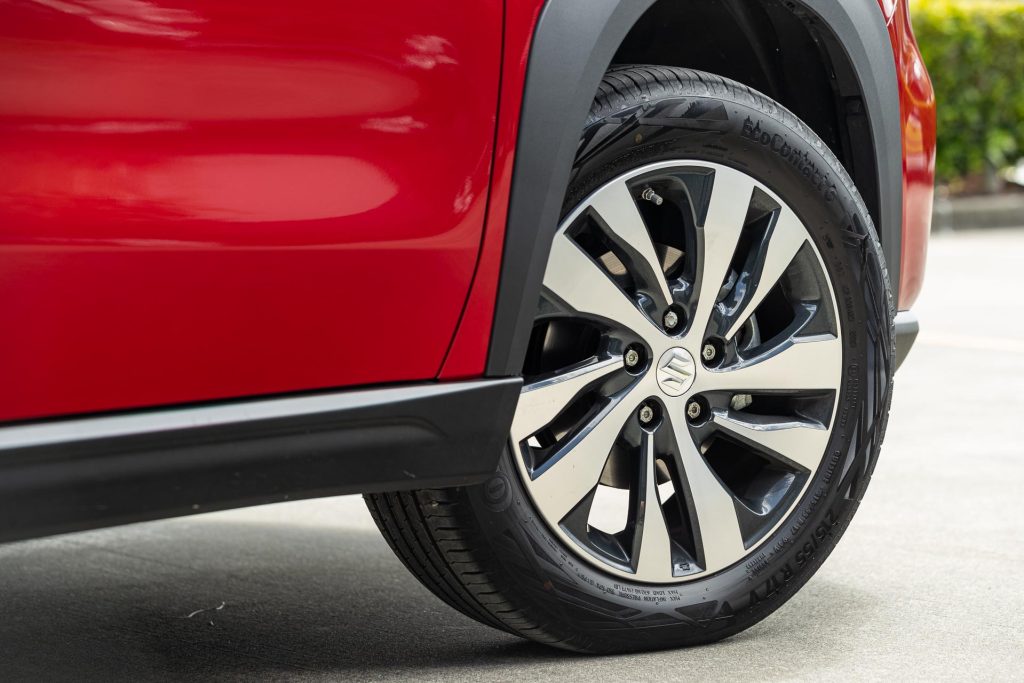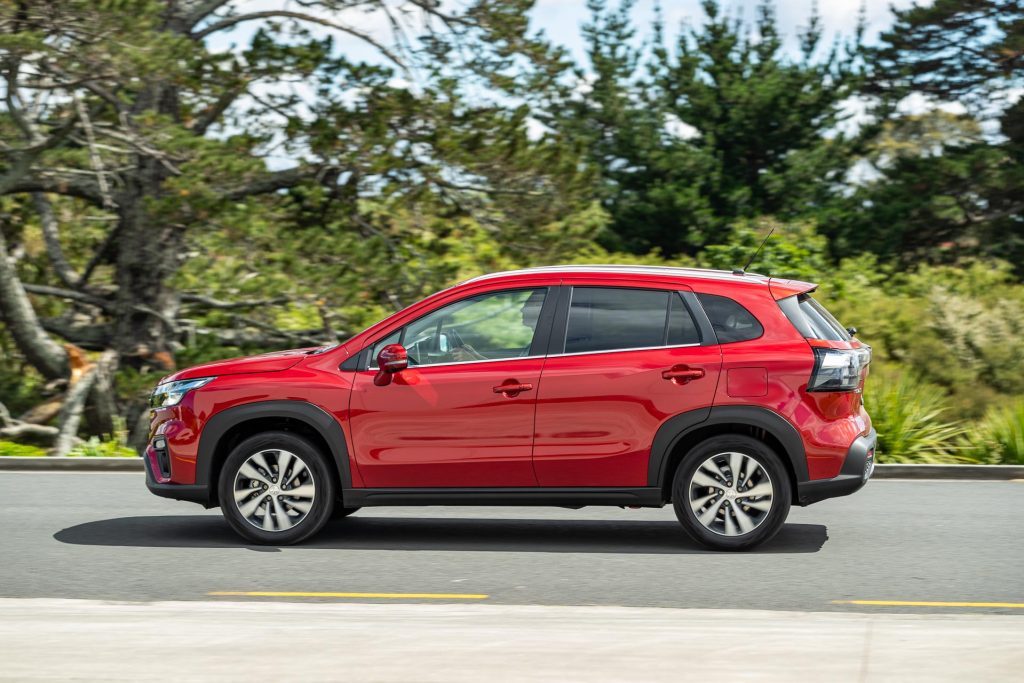2023 Suzuki S-Cross Hybrid review
Suzuki’s biggest model is the S-Cross, the JLX Hybrid 2WD and AWD models being the latest additions.

Small car maker Suzuki’s biggest model is the S-Cross, the JLX Hybrid 2WD and AWD models being the latest additions. We drive the former.
What a coincidence. This month we’ve driven two front-wheel drive compact crossovers, both with small turbocharged engines and integrated belt starter generators to give an added boost at the bottom end and reduce fuel consumption.
Both are also weirdly analogue in this day and age, with buttons for lots of things, small infotainment screens and – would you believe – old fashioned handbrakes, the type that requires lifting and releasing.
Both have paddle shifters, should you feel the urge, and these relatively compact five-seater crossovers sell in the $40k area, the sportier, slightly smaller one being a few grand more expensive.
But when all is said and done, the Suzuki S-Cross Hybrid and Ford Puma ST really couldn’t be more different as drives.
One is quick-ish with brilliant steering characteristics and hurtles through corners thinking it’s a sports car. Its jiggly ride quality in town you can almost forgive.
With lower profile footwear and rather more of it one is noisier on the move, though undoubtedly has better grip.
The other is almost the opposite in character. The steering is slower, more remote in nature, and while the handling is more than adequate, especially given the modest tyres it runs, it is the quiet, refined ride that stands out in this vehicle.
It performs reasonably well too and will sip fuel at an agreeable rate, our weekend average of 6.1L/100km in mainly open road driving being not far from its quoted average.
It too has such simple controls, and is fuss-free to drive. But as a character it melds into the background more.
No guess then as to which is the Suzuki S-Cross Hybrid and which is the Ford Puma ST. They’re essentially chalk and cheese, yet in so many ways are astoundingly similar.
Low fuel use figures
Meantime, it’s the slightly larger and roomier, but less exciting Suzuki S-Cross Hybrid in FWD guise that we’ve been driving more recently.
It’s not as flashy as the Puma ST, but then we’d expect the people who are buying it aren’t either. It’s aimed at a slightly more mature audience.
There are no drive modes, for instance, and they aren’t missed. On the performance front this can’t quite match the Puma ST but then this is bought more for its fuel economy and practicality.
Running a 1.4T 95kW/235Nm engine driving through a six-speed auto, it also has a 48v integrated starter generator (ISG) that adds 10kW and 50Nm to the bottom line, giving it a boost off the mark while the turbo ramps up.
This facilitates stop-start running – restarts are almost instantaneous – while in cruising situations it takes some of the load off the engine and ensures the small lithium-ion battery recharges under deceleration.
New S-Cross hybrid comes in front-drive and AWD formats, in JLX specification, and they use roughly 20 per cent less fuel than the 1.4T engine of the last S-Cross alone.
The average is said to be 5.5L/100km for the 2WD variant, though 95 octane gas is required. Over a week of driving we averaged 7.1L/100km.
Towing ability improves over the 1.4T, up 300kg to 1500kg for the mild hybrid.
The S-Cross was renewed last year, sporting a flasher look than its predecessor, though the interior isn’t quite as fresh, and hard plastics dominate the dash and doors.
It’s old-fashioned in some ways too, the odo settings and driver info accessed by stalks emerging from the instruments. We prefer on-wheel controls as you don’t have to take your hand off the wheel.
And there are too many different trip computer layers showing information of dubious utility.
The more ordinary cabin ambience is noticeable after stepping out of the Puma ST with its Recaro pews and mock CF trim.
But outside the S-Cross Hybrid presents better with slimline LED headlights that contain three elements, and a blackened grille with horizontal chrome finisher. Silver roof rails are standard.
There’s a powered sunroof as well, with an electric blind beneath. Still, the overall shape is more forgettable than that of Puma. However, it is roomier.
Easy drive
This is a relative lightweight in the scheme of things at 1265kg (125kg less than the Puma ST) and it feels breezy and easy like that on road.
We drove the 2WD variant through some familiar winding thoroughfares in the dry and aside from some roll and mild understeer it turns better than it has a right to for a tallish front driver that rides on EcoContact 215/55R17 rubber.
The brake pedal feels like one too, where in many electrified vehicles it’s corrupted by regen. Plus there’s decent urge down low and into the midrange, peak torque available from 2000-3500rpm.
What also impresses is the relative ease of driving, along with its room. The climate controls are separate from the infotainment screen and there are buttons for commonly used items.
We saved our favourite radio stations to three presets within about a minute. But Bluetooth phone hookup took some time to fathom.
It’s easy to switch off lane keeping and it doesn’t reset after each start up. Making life easier is amazing all-round visibility, and lightweight steering and brakes.
On the latter, the eco-rubber limits emergency braking distances from 100km/h to around 39m.
As mentioned, this is roomy, being the biggest passenger car that the small car specialist makes (4300mm in length, 74mm more than Puma).
As a compact crossover, it is one of the largest. Entry and exit are much better than in Puma ST, as is passenger space in the rear.
There’s no powered fifth door which Pumas ST gets but it isn’t really missed. Seat comfort is okay, though we’d wish for driver lumbar adjustment.
Luggage capacity is 440L, similar to the Ford’s, and with 1320mm of gear space between the rear wheel arches, golfers can fit a bag in crossways, with a fold-up trundler in front.
There’s also a hidden cubby beneath or the floor can be lowered to make use of that space above.
The JLX S-Cross hybrid comes with 17-inch alloys, keyless entry and start, dual zone air, paddle shifters, adaptive cruise control, partial leather trim, seat heating, a nine-inch infotainment screen, wireless phone connectivity, a 360 degree camera, and digital speed readout. There’s no traffic sign recognition though.
Safety items run to lane departure warning and prevention, RCTA, BSM, and seven airbags, along with adaptive cruise as mentioned (though it doesn’t have stop and go functionality).
Other items include heated mirrors, privacy glass, and front and rear parking sensors and fog lamps.
Prices for the pair are $42,990 plus ORCs for the 2wd model ($3500 less than Puma ST) and AWD adds $3k.
If it were me, I’d find some way to stretch to the slightly smaller Puma ST which also looks a bit more ornery inside and out. But those chasing ride quality, more cabin space and added fuel efficiency might think differently.
Model
Suzuki S-Cross Hybrid
Price
$42,990
Engine
1373cc, IL4, T, DI
Power
95kW @ 5500rpm
Torque
235Nm @ 2000-3000rpm
Motor Output
10kW / 50Nm
Drivetrain
6-speed auto, FWD
Turning circle
10.8m (2.5 turns)
Fuel Use
5.5L/100km
C02 Output
124g/km
0-100km/h
7.65 sec
Tyre Size
f/r-215/55/R17
Fuel Capacity
47L
Stability systems
ABS, ESP
Safety
AEB, ACC, BSM, LDW, RCTA, ALK, AHB
Luggage Capacity
440-1230L
Tow rating
600kg (1500kg braked)
Service intervals
12 months/10,000km
Warranty
3 years/100,000km
ANCAP rating
Not yet rated
Weight
1265kg (claimed)
This article first appeared in the December/January issue of NZ Autocar Magazine.
View listings on Trade Me Motors: Suzuki S-Cross
This article was originally published on autocar.co.nzAlso consider
